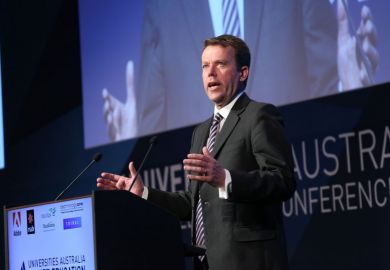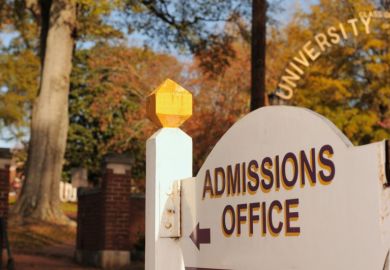Australia’s tuition fee shake-up, the biggest change of its type in almost a quarter of a century, will fundamentally shift the rationale underpinning student contributions.
Instead of paying higher fees for courses thought to lead to high-income occupations – the conceptual basis of changes imposed in 1997 by Amanda Vanstone, the education minister at the time – students will now attract lower fees if they opt for courses geared to employer demand, under proposals outlined by the federal government.
Commentators have questioned whether such “price signals” – targeted at universities as well as students – will change behaviour sufficiently to meet the skills needs of the economy or to reshuffle the sector’s finances enough to fund a 4 per cent increase in the number of university places over the years to 2023.
Education minister Dan Tehan said they would, citing the popularity of new discounted short courses as evidence of universities’ capacity for flexibility and students’ inclination to favour areas with strong employment prospects.
Addressing the National Press Club on 19 June, Mr Tehan stressed that many of the short courses had been developed in the same “priority” disciplines – health, technology, education and construction – in which the government now proposed to reduce student fees and boost government subsidies.
“One of the things that gives us confidence is what we’ve seen through microcredentials,” Mr Tehan said. “The innovation from the higher education sector plus the strong demand…really demonstrates that students have an eye to making sure they get educated in the areas where jobs will be.”
The government has also unveiled initiatives to boost participation by students from disadvantaged communities – particularly in regional and remote Australia – and to encourage universities to work more closely with businesses.
They include allocating universities A$500 million (£276 million) a year for programmes that support study by Indigenous, regional and disadvantaged students. The government will also guarantee undergraduate university places for Indigenous people from regional and remote areas.
Mr Tehan also announced new incentives for regional students to relocate for study, including a A$5,000 “tertiary access payment”, and a A$49 million fund to support research collaborations involving regional universities.
But these schemes will be financed by rejigging the existing Higher Education Participation and Partnerships Programme (HEPPP), while a new A$900 million National Priorities and Industry Linkage Fund – designed to help universities produce “job-ready graduates” for nearby industries and communities – will be supported from current teaching and learning grants.
The only additional money for the sector will come from the government’s decision to end a three-year pause in the indexation of teaching grants, which will now rise in line with inflation.
University groups welcomed the increased indexation and the commitment to create another 39,000 university places by 2023. “Getting our national education and skills agenda right is critical to militate against the social disadvantage occurring because of Covid-19,” said Attila Brungs, chairman of the Australian Technology Network of Universities.
He said his network welcomed the government’s apparent intention to remain the “majority funder” of students’ places. But the Group of Eight said the government was “hardwiring in a relative disinvestment” because students would now shoulder an increased responsibility to fund the sector.
Chief executive Vicki Thomson said this was particularly the case for law, economics and business students, whose fees will rise by 28 per cent under the government’s proposals, and especially humanities students, whose tuition costs will more than double.
Meanwhile, per-student government contributions will be halved for the traditionally profitable disciplines of law and economics and slashed by between 82 per cent and 90 per cent in humanities, society and culture courses.
“We disagree strongly…that these students should have to pay over 90 per cent of the cost of their degrees,” Ms Thomson said. “But we recognise that out of Covid has come the need to embrace a level of pragmatism for the long-term national good.”
Western Sydney University vice-chancellor Barney Glover said the extra university places would help to satisfy domestic demand in his region, where youth unemployment and general underemployment were set to spike following the pandemic.
But Professor Glover highlighted risks from the changes to fees and subsidies. “While we recognise the importance of aligning university courses to future employment opportunities, we need to ensure we continue to have a diverse range of graduates entering the labour market.”
Central Queensland University said regional communities would “benefit on balance” from the government’s proposals. “Evidence shows that when people go to university in a regional area, they’re more likely to stay in the regions after they graduate,” said vice-chancellor Nick Klomp.
Register to continue
Why register?
- Registration is free and only takes a moment
- Once registered, you can read 3 articles a month
- Sign up for our newsletter
Subscribe
Or subscribe for unlimited access to:
- Unlimited access to news, views, insights & reviews
- Digital editions
- Digital access to THE’s university and college rankings analysis
Already registered or a current subscriber?








